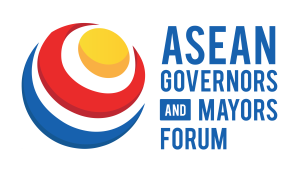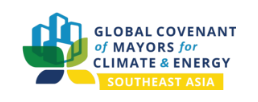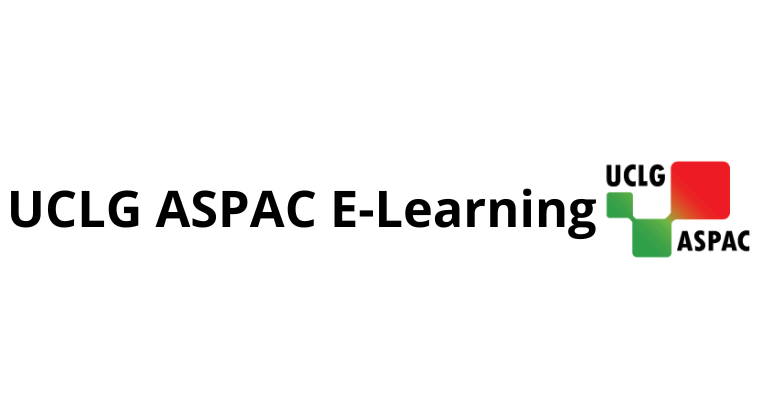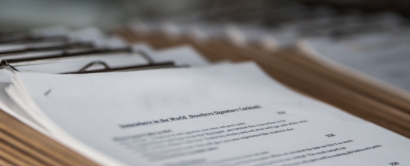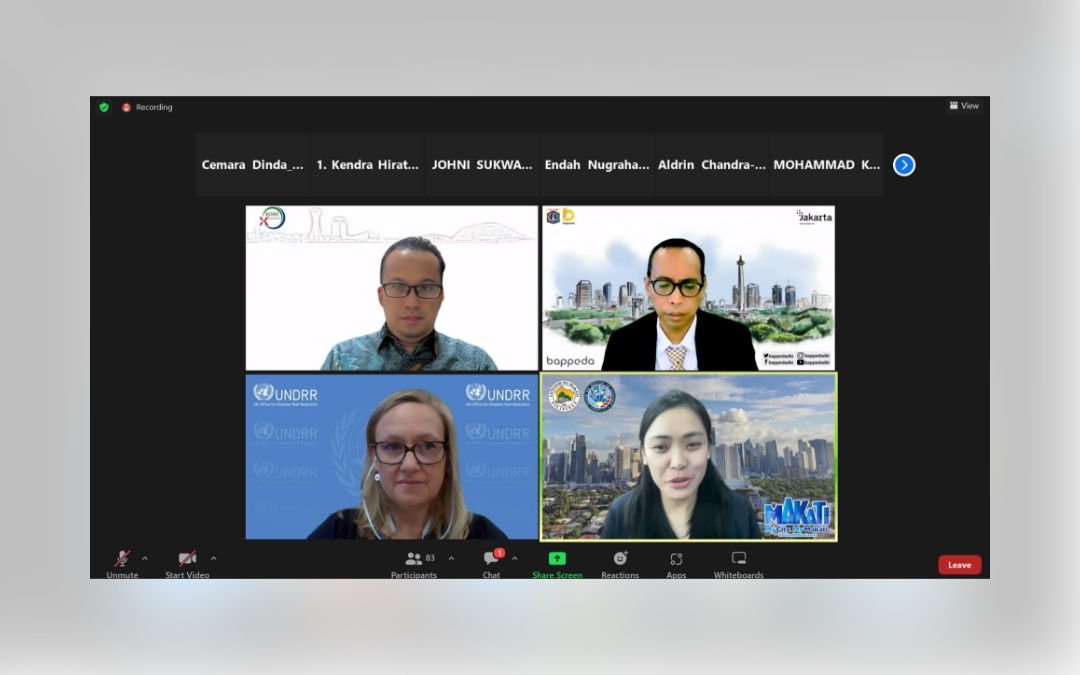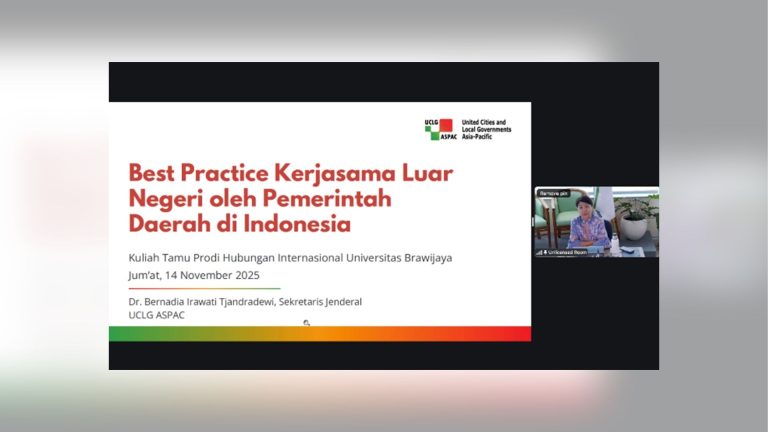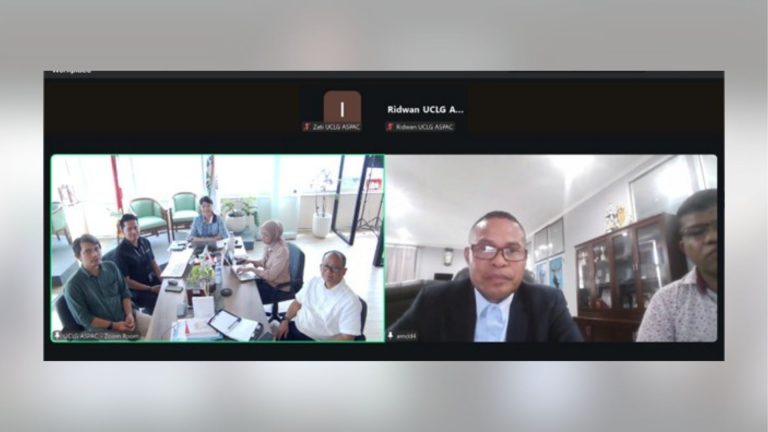Makati’s Next Level of Disaster Preparedness by “Making Disaster Resilience as a Way of Life”
Makati is one of the densely populated cities in Metro Manila of the Phillippines. This city had been affected by hydrometeorological hazards, which caused impactful damage. A total of 90.200 people were left with inundated houses, with 162.977 square kilometres of damaged floor area, and damaged floor cost approximately reaching 1.7 billion PHP (31.1 million USD).
It is then crucial for the Makati city government to habituate the resiliency initiatives to reduce the effect of future disasters by disseminating disaster preparedness to its citizens. Also known as the country’s financial hub, Makati’s efforts in disaster preparedness are without a doubt. Furthermore, as a city located in a country that is prone to tropical cyclones, it is not enough without bringing Makati City into a conversation of resiliency. Investing in resilience and understanding its risks had become the basis of Makati’s resilience planning.
As Ms Liza Velle. B. Ramos, the Research and Planning Head of Makati DRRM Office, stated on the webinar that Makati’s interventions have been well-thought-out, with implementation of very strategic approaches. For example, Makati crafted several contingency plan documents to support DRRM-r Related Plans. Those plan documents are namely the Makati DRRM Plan 2019-2030, Makati Contingency Plan for Earthquake, Makati Contingency Plan for Hydrometeorological Hazards, and Local Climate Change Action Plan. The city governance of Makati formulated those documents as direction and guidance for implementing their disaster risk reduction and management plan.
Ms. Ramos also explained about Makati DRRM Plan 2019-2030 and highlighted four goals based on the Sendai Framework for DRR Targets.
- Goal 1: Reduced disaster-related mortalities, including injuries.
- Goal 2: Minimised number of the affected population
- Goal 3: Reduce disaster-induced economic loss
- Goal 4: Minimise damage to infrastructure and disruption to critical services.

With these four goals, the city government of Makati then conceptualised several programs based on each of the goal’s outcomes. Putting “Making Disaster Resilience as a Way of Life” as the title of the presentation, the Makati DRRM office tries an innovative way to raise the community’s disaster awareness. Ms Ramos then spotlighted three programs specified for the webinar. Those three programs are:
- Risk Information Services, this program aims to ensure the availability and timely provision of risk through developing its Early Warning System (EWS) enhancement project. This program has community-based information services through the Makatizen Application, working as SOS/panic button for its citizens to report incidents or emergencies.
- DRRM Education, this program aims to provide education continuously even in the face of a disaster.
- DRRM Community Organization, Participation, and Empowerment (DRRM COPE), this program aims to build the capacities of the community to cope with disasters through implementing activities of sharing knowledge and skills in disaster preparedness.
DRRM COPE and DRRM Education are the two programs that drive local communities to maximise self-help at the individual or household level as well as to enhance mutual help for local communities to help each other get through the hard times.
There were four crucial key takeaways for city and local governments that prioritise DRRM in their specific areas. First, a city must ensure that its interventions are science-based and risk-based. Second, the city must ensure the harmonisation of city and community-based practices. Third, to effectively engage the stakeholders, a city should have target-specific intervention and, if possible, put some creativity into the disaster preparedness activities. Fourth, this can happen only if the city ensures strong disaster risk governance.
It is obvious for local governments to be able to keep up and improve the capacities in maximising the full potential of disaster prevention and preparedness of a city . Makati also mentioned that disaster preparedness has to consider different sides of interventions, whether it will be technology, science, community, governance, and many more. Ms Ramos expressed that resilience is everybody’s business because Makati believes that with the cooperation of different community sectors, they can continue building a more resilient Makati. Making disaster resilience as a way of life gives citizens excellent preparedness in the face of a disaster, which is vital for a more resilient Makati.
Jakarta’s Resilience Strategy
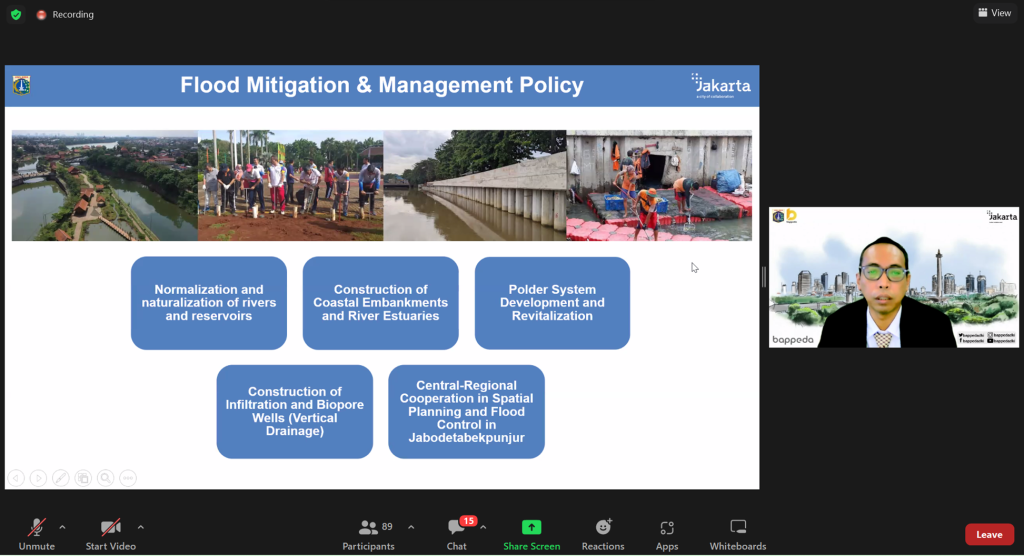
Jakarta is one of the world’s megacities, located in a strategic yet vulnerable position on top of a delta and the Pacific Ring of Fire. Home to 10,8 million people in 2021, this city is the centre of surrounding municipalities, creating a metropolitan area called the Jabodetabek megacity. 13 rivers cross Jakarta with a rainfall rate of 2.394,6 mm per year.
The Regional Development Planning Agency (BAPPEDA) of the Jakarta City Government identifies the number of shocks and stresses the city might be able to withstand. Shocks are in the form of floods, fires, social conflict, extreme weather, infrastructure failure, disease outbreak, and earthquakes. Meanwhile, stresses were identifiedas traffic congestion, bad sanitation, climate change, air pollution, access to clean water, waste management, and land subsidence.
In 2021 alone, the city encountered 72 floods, 536 fire events, 12 landslide events, and two extreme weather events. As Dr. Ir. Nasruddin Djoko Surjono, Head of Regional Development Planning Agency (BAPPEDA) of the Jakarta City Government, emphasised, “Shocks in the form of floods and earthquakes are the main threats. To overcome this, this city needs to be more resilient and prepare for a better future with a comprehensive resilience strategy. To overcome the shocks and stresses, the Jakarta provincial needs to address and even re-think the aspects of Jakarta’s resilience strategy.
Dr. Surjono briefly expressed that there are many underlying factors for the city’s flood risk. Upstream land-use is highly developed, which in turn increases water runoff upon rainfall in the upstream area. As a result, the 13 existing rivers absorbs runoff water from those surrounding areas to flow towardsJakarta’s bodies of water. In addition to the city’s seasonal rainfall, has caused further land subsidence. In the downstream area, climate change has contributed to the rising sea level, thus causing a portion of the land in the northern coastal part of the city to be drowned by the rising seawater.
Dr. Surjono explainedResilient Jakarta Pillars, which consists of three main pillars which areWell-Prepared Jakarta, Healthy Jakarta, and Connected Jakarta, with two supporting pillars of Good Governance and Social Cohesion. These pillars come with 12 directions, also consisting of 32 strategies. The first pillar is Well-Prepared Jakarta whichconsists of four directions: the Climate Kampung initiative, infiltration wells, air pollution control, and introducing urban farming. The second pillar is a Healthy Jakarta, which includes various disaster mitigation and adaptation measures such as river naturalisation and normalisation, rainwater harvesting, waste bank implementation, and installing Intermediate Treatment Facility (ITF). The last third and last pillar is a Connected Jakarta, whichconsists of the already established public transportation systems such as the Transjakarta bus transportation system, Mass Rapid Transit (MRT), electric buses, and a smart city initiative unit called the Jakarta Smart City (JSC). The city resilience vision is the primary driver to implementing resilience strategies for a better Jakarta.
As floods are more frequent in Jakarta, the city has implemented further flood mitigation and management policies. These policies aim to support, preserve and enhance Jakarta’s environment and biodiversity to minimise the impacts of the floods in the future, such as naturalisation of rivers and reservoirs, construction of coastal embankments, polder system development, and construction of infiltration and Biopore wells.
Last but not least, Dr. Surjono described the policy-driven strategies of disaster risk reduction and management, involving the important role of the Jakarta city government. This comes in the form of Central-Regional Cooperation in Spatial Planning and Flood Control of Jabodetabekpunjur.
Another notable fact is how Jakarta differentiates its flood management into three phases:
- Flood prevention includes efforts such as channel draining, dredging rivers and reservoirs, pump repair and mobile pump.
- Upon the occurrence of a flood, efforts taken are forms of flood control, such as theplacement of task forces in flooded points, Komando Banjir (disaster emergency response command), and runoff countermeasures.
- After the flood, each of those three phases include strategies to overcome impacts. Technology utilisation is also applied by placing sensors on several flood points in Jakarta. The system can generate real-time data, conduct analyses, and visualise the data for sharing purposes.
Therefore, it can be seen that with the rapid development of technology, a system is needed to predict potential disasters. In fact, Jakarta has its own Flood Management System, with sensory tools implemented in several possible flood points to provide real-time data monitoring. The system also collects historical data and knowledge while performing predictive analysis to develop data-driven decisions. This proves how ttechnology advancement and innovation will always rise as time passes, and Jakarta is a city that knows how vital technology utilisation is for disaster preparedness. From what Dr. Surjono explained in the webinar, it was evident that resilient cities also need comprehensive strategies and policies to support them. In the face of rapid urbanisation, local governments also need to be aware of potential disasterthreats that their city can possibly encounter. In addition, cities needs to optimise their resources in tackling unwanted situations or unexpected impacts from various shocks and stresses fromfloods. Having encountered multiple times throughout history will be loosened through these strategies of cooperation and implementations to create a resilient Jakarta.
The Important Role of ICT in Disaster Risk Management in Japanese Cities
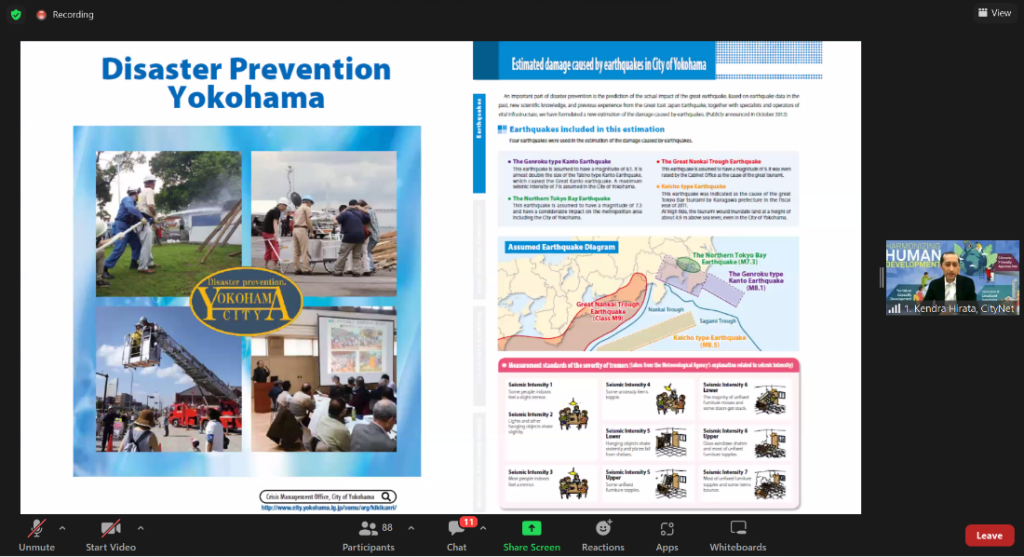
We have seen how Jakarta has strategically utilised technology advancements to tackle disasters, may it be natural or climate-induced. Similarly faced in Japan, the country has experienced many natural disasters, therefore many Japanese cities have formulated a comprehensive system to increase their resilience toward disaster by strengthening the use of information and communication technologies or ICT.
Japan has three disaster risk management principles which are: Self-help, Mutual help, and Public help. Self-help and mutual help are typical at individual and community levels. This is reflected withi locals leading a well-established system and practice of disaster preparedness from schools to community groups. These principles ensure preparedness, awareness raising and response to some extent, giving the citizens a sense of safety. The third principle, public help, is mainly for the authorities to undertake strategic planning on a broader scale and provide professional responses in the face of disasters.
All three are practised based on scientific and local data, allowing for specific planning and execution of the programmes. However, cities may face several challenges in implementing those principles, including limited human resources and budgets.
Here are some possible solutions to overcome those challenges at the local level by utilising ICT, explained by Mr. Kendra Hirata, Program Development Director of CITYNET Yokohama Project Office.
1. Collecting data and information
Data and information gathering are essential as the first step in disaster risk reduction and management. The city needs to know their existing conditions towards tackling disasters, what hazards exist, historical information on disasters in the area, and also how well the community has been prepared to handle them. Therefore, cities can formulate specific planning and execution of the programmes needed. But often, the cost of data and information collecting is considerably high. This is due to the lack of human resources, and perhaps the difficulty in accumulating necessary data and information.
Initial solutions can lie in utilising the local talents or community figures. These local talents can be considered as open and low-cost sources. The second solution is that cities can collaborate with universities to implement the participatory mapping routines. The city can also train active youth groups in the communities to conduct some of the surveys, thus contributing to the availability of data that reflects local contexts and needs. Lastly, cities can always use the already available data, which will be discussed further in the next section. The local government can consider all these things as solutions to reduce data and information collection costs.
During the webinar, we can see how sseveral cities proved that these solutions are doable. The first is Bandung City, Indonesia. They engage university students to gather essential data in the efforts of assisting the city in developing proper development plans for the public. Another example is from Iloilo City, Philippines, where residents were asked to draw their own contingency plans based on past experiences. Each individual conducted detailed profiling to map out all vulnerable aspects of that community and made strategic disaster risk plans. This activity has successfully convinced the city council to increase the disaster budget.
2. Enabling accessible data and information
Interlinked and shared data and information can be useful in various city works and planning, including disaster risk reduction and management asmany sources of data and information are available all over the cities, from academician, the private sector, the community, media, or even from the individual and collective memories of the survivors. Individual memories of the survivors can be key data sources; considering that they are the ones who experienced it first-hand, they definitely have a meaningful story to tell.
However, more often than most, collected data and information cannot be easily accessed. One main concern is privacy issues uponsharing data, but critical information can be shared without compromising the privacy of individuals. Behind it all, those data and information can help to reduce costs, justify the budget, and develop a practical strategic framework with a proper basis.
3. Sharing data and information efficiently
For effectivity and transparency, cities needs to disseminate accurate and science-based information to the public. This canenhance their understanding of the local hazards and strengthen their own self-help and mutual-help strategies. Considering that the public’s understanding level may differ, simplified and practical data and information is the answer. As Yokohama city has done, they released their updated disaster prevention strategies regularly. This update contains all kinds of simplified information on hazards, prevention and mitigation strategies, and response techniques that are understandable for communities.
Overall, all these best practices show the vital role of ICT in disaster risk reduction and management.
Disaster Risk in Global and Regional Context calls for Systemic Change

Although some UN member states have adopted Sendai Framework;the global guideline for disaster risk reduction, the world is failing to reduce disaster risk on track. Instead, by 2030, global disasters are projected to increase by 40%, meaning 540 disasters can occur yearly. This worsening condition is caused by the climate crisis, increased urbanisation, and the COVID-19 pandemic.
If this trend continues, the world not only needs to take action in reducing risk but to also do so coherently with all of the climate and sustainable development action, corresponding to Ms. Wade-Apicella’s explanation as Program Management Officer United Nations Office for Disaster Risk Reduction (UNDRR) at the KLRTC 42: Getting into Action – Disaster Prevention for Cities Resilience Webinar. Disaster risk reduction and climate and sustainable development action are significantly correlated, considering that climate change adaptation does not exist without disaster risk reduction. Also, disaster impacts are increasingly cascading that the risk creation is happening faster than we can reduce the risk. Therefore, a focus on resilience development is a must.
Another challenge that the world is currently facing is human behaviour and/or action. “Human action is creating greater and more dangerous risks. The world is becoming increasingly interconnected, and the risks are cascading across geographies, sectors, and pushing us towards the existential limits.”, Ms. Wade-Apicella said. This challenge requires us, as humans, to better understand systemic risk and accelerate reduction action by building on existing risk reduction know-how, transforming systems to make them more resilient, and developing enhanced approaches to address systemic risk.
These two trends call for us, city and local governments, as one of the crucial stakeholders in implementing disaster risk reduction actions at the city level, to shift the way we think of the world around us, what we need to do, and the governance mechanisms to ensure a very inclusive approach. Local governments must consider that humans make decisions differently based on their knowledge and circumstance. This bias may undermine the approaches to addressing risk, but it can also be used as a learning opportunity, especially regarding local and indigenous knowledge. Therefore, there is a need to redesign systems that can factor in how decisions are made, consider the biases, and recognise the role of perceptions. In addition, local governments also need to reconfigure governance and financial systems to improve how we work across these different groups.
In the context of Asia Pacific, there is a scoping study conducted by UNDRR on cascading and systemic risk in the Asia Pacific. It includes a framework to help guide the local government’s planning and decision-making. It also shares many case studies that look at the different dimensions of risk, the disaggregation of vulnerability and exposure databases, adaptive and integrated risk governance mechanisms, and various financing mechanisms.
Ms. Wade-Apicella also encouraged cities to check on the Asia Pacific and Global Assessment reports and join Making Cities Resilient 2030 or MCR2030. This platform providing services and expertise to find recommendations that match a city’s needs in disaster risk reduction and prevention, particularly ones that contain a resilience approach to governance, legislation, financing, climate action, and ensuring inclusivity.
In final words, this can be considered an increasing call for us, as humans, as a society to ensure a more resilient and sustainable approach in everything related to disaster risk reduction and management.
By KM Team

